 Overview
Overview
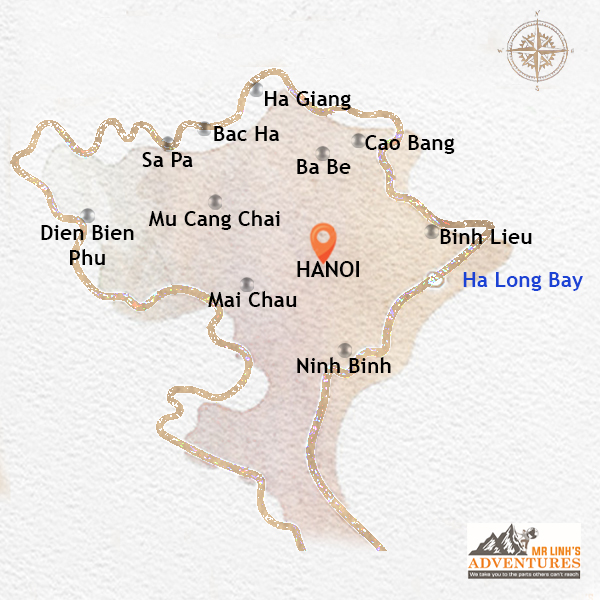 Hanoi
Hanoi, the capital of Vietnam, is a must-visit destination for travelers seeking authenticity and cultural immersion.
This millennia-old city, located on the banks of the
Red River, is captivating with its French colonial architecture, its peaceful Buddhist temples, its lively markets, and its flavorful street food.
Hanoi is an ideal gateway for exploring northern Vietnam and experiencing unforgettable adventures.
 Top Attractions
Top Attractions
Hanoi is full of captivating activities. Here are four essential experiences that make the city famous:
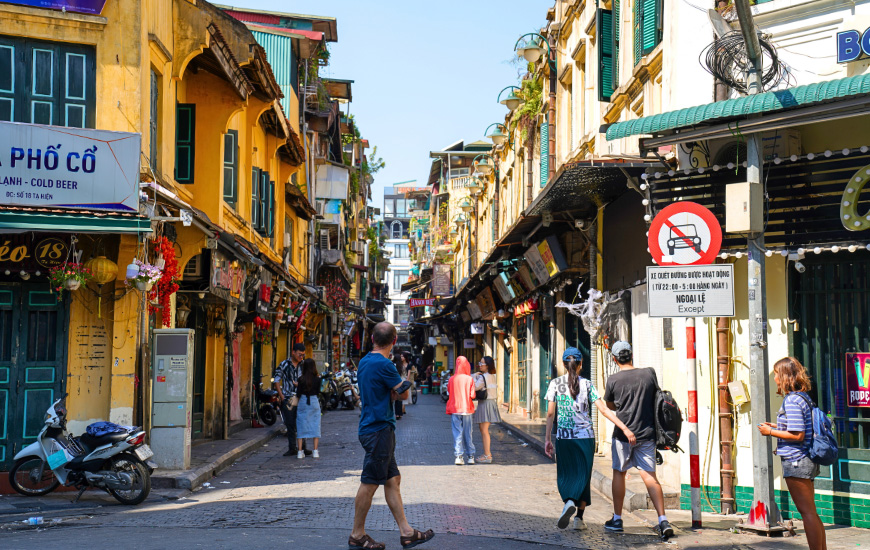
Hanoi's Old Quarter, a timeless journey - Mr Linh's Adventures
Strolling through the Old Quarter
A labyrinth of narrow and lively streets, the Old Quarter is the historical heart of Hanoi. Here you will discover traditional houses, craft shops, hidden temples, and a unique atmosphere. It is the ideal place to soak up the local atmosphere and observe the daily life of Hanoians.
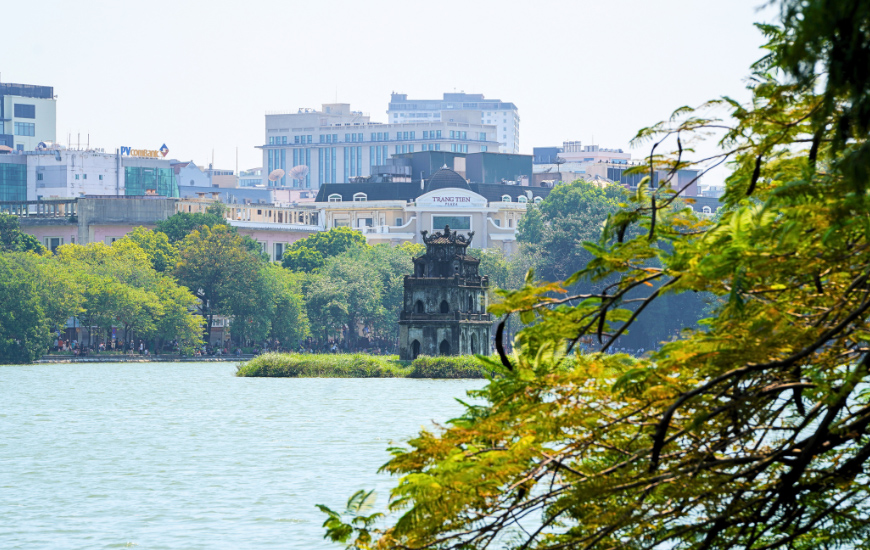
The heart of Hanoi, Hoan Kiem Lake’s iconic tower - Mr Linh's Adventures
Visiting Hoan Kiem Lake and Ngoc Son Temple
Located in the heart of the city, Hoan Kiem Lake is a true haven of peace. Ngoc Son Temple, perched on an islet in the middle of the lake, is an important place of worship and offers a breathtaking view of the surroundings.
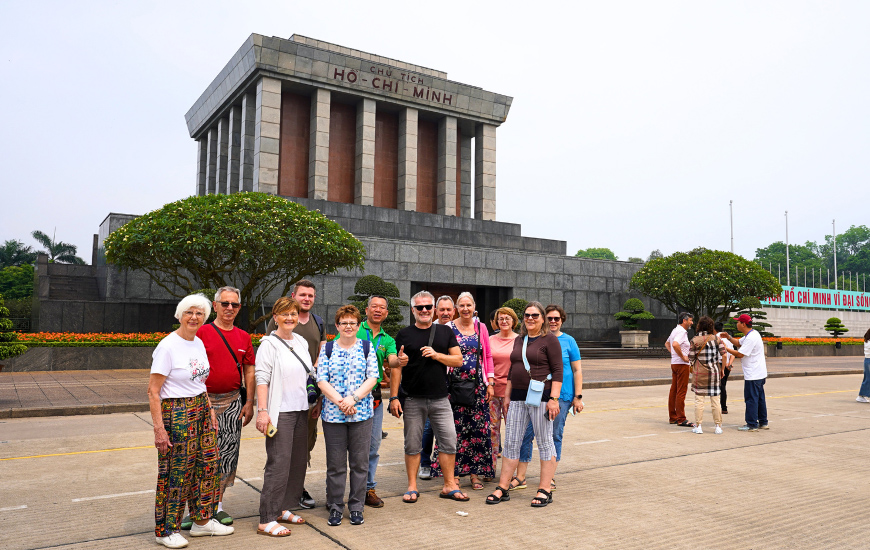
The Ho Chi Minh Mausoleum, the resting place of Vietnam’s greatest hero - Mr Linh's Adventures
Discovering the Ho Chi Minh Complex
To understand Ho Chi Minh's importance in Vietnamese history, a visit to the complex dedicated to him is essential. From Ba Dinh Square, the historic site of the declaration of independence in 1945, to the mausoleum where he rests, passing by the One Pillar Pagoda (Chùa Một Cột), rebuilt after its destruction by the French and whose origins date back to the 11th century, and his stilt house, preserved as he lived in it, each place testifies to the deep respect and admiration that the Vietnamese people have for him.
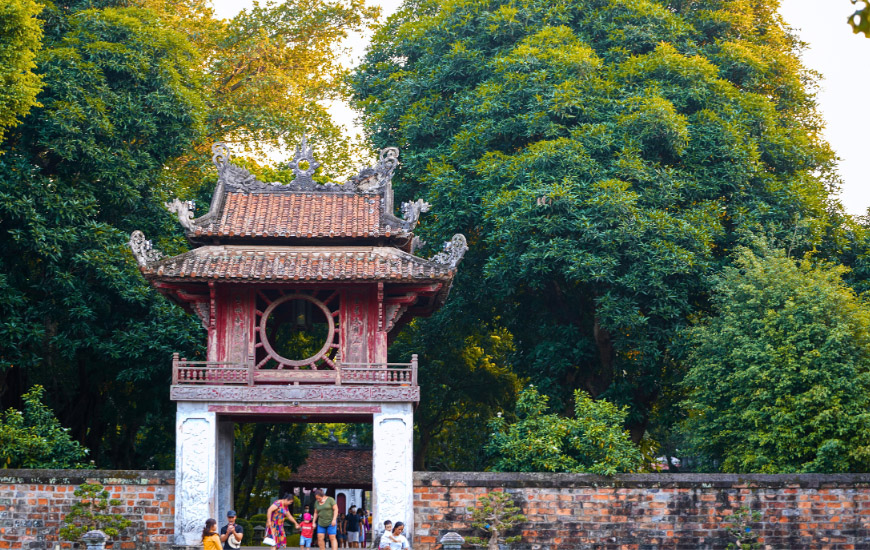
Hanoi Temple of Literature, home to the country’s oldest university - Mr Linh's Adventures
Discovering the Temple of Literature
Dedicated to Confucius, the Temple of Literature is a magnificent architectural complex that once housed Vietnam's first university. It is a place steeped in history and culture, a true symbol of education and knowledge.
 See & Do
See & Do
Hanoi offers a multitude of activities for adventurous travelers:
Exploring local markets
From lively street markets to the Don Xuan covered market brimming with fresh produce, Hanoi's markets are a true immersion into local life. It is the ideal place to discover local flavors, bargain for souvenirs, and meet locals.
Getting lost in the alleys
Let your instincts guide you and explore Hanoi's hidden alleys. You will discover hidden treasures, picturesque cafes, artisan workshops, and authentic scenes of life.
Taking a bike ride
Renting a bike is an excellent way to discover Hanoi at your own pace. You can explore residential neighborhoods, green parks, and the city's surroundings.
Participating in a cooking class
Learn to prepare traditional Vietnamese dishes and discover the secrets of local cuisine. It is an enriching and flavorful experience.
 Go Green
Go Green
 Heritage
Heritage
In 1831, Emperor Nguyen Minh Mang named the city "Hanoi," meaning "between the rivers," marking the beginning of a period of profound political upheaval. Vietnamese authority gave way to French occupation, followed by the Japanese invasion in 1940. In 1945, Ho Chi Minh proclaimed independence, but a brief period of autonomy preceded the return of the French in 1946. This era profoundly marked Hanoi's face, notably through its architecture. Saint Joseph's Cathedral, with its neo-Gothic style, and the Hanoi Opera House, a majestic building inspired by the Palais Garnier in Paris, testify to the lasting influence of French architecture. Even today, a certain European romanticism emanates from the vestiges of the colonial era, from the imposing traditional French-style villas to the tree-lined streets. Although time has weathered their facades, these buildings, like the cathedral and the opera house, evoke a bygone era. Even after the end of French rule in the 1950s, its influence persists in Hanoi, in architecture, but also in literature, the arts, and cuisine.
Echoes of France, the enduring beauty of St. Joseph’s Cathedral - Mr Linh's Adventures
While Hanoi regained its independence in 1954, peace was short-lived. From 1955, the war against America broke out and lasted until 1975. Hanoi then suffered considerable losses and destruction. Despite these hardships, the Vietnamese, a resilient, ambitious, and creative people, set about rebuilding their city. Although the scars of these conflicts are still visible, Hanoi has undergone rapid development in recent decades, a spectacular transformation that most inhabitants have witnessed.
Hanoi offers a striking spectacle of contrasts. Streams of motorcycles weave between peaceful lakes and centuries-old temples. The elegance of French colonial buildings blends into the tight fabric of Vietnamese houses in the Old Quarter. On the outskirts, urban development is manifested by the shadow of skyscrapers extending over modest scenes of daily life. This tension between tradition and modernity, far from dividing, forges Hanoi's unique soul.
A millennia-old city, Hanoi is a city steeped in history and culture. There are many historical and cultural sites, such as the Thang Long Imperial Citadel. Inscribed on the
UNESCO World Heritage List in 2010, it offers a journey through Vietnam's history. Built in 1010, it was the political heart of the country before the court moved to Hue. Despite the destruction caused by conflicts, remarkable elements remain, notably the Hanoi Flag Tower, which proudly testifies to the capital's past.
Hanoi is also a melting pot of cultures, where different ethnic communities coexist. In this regard, a visit to the Vietnam Museum of Ethnology is a true invitation to discover the cultures that make up the country. The exhibitions explore the customs and traditions of Vietnam's 54 ethnic groups, including the 53 minorities and the majority Kinh group, through a rich collection of objects, videos, installations, and photographs. The immersion is total thanks to life-size reconstructions of traditional villages, nestled in a green setting.
Vietnamese Water Puppets - Mr Linh's Adventures
Let us conclude our cultural overview with the water puppet theater, a flagship attraction of Hanoi, and rightly so. The wooden puppets, manipulated with great skill, tell picturesque stories of rural Vietnam, accompanied by traditional music and songs. The show is an enchantment for all ages. The Quang Ba flower market, for its part, offers a unique nocturnal spectacle. During the day, it is almost invisible, but as soon as night falls, it transforms into a vibrant market. The perfumes of freshly cut flowers mingle with the bright colors of the bouquets. The sellers, often on bicycles, transport impressive quantities of flowers, creating an incessant and fascinating ballet. We observe them bargaining with customers, in a lively and friendly atmosphere. At the back of the market, small local restaurants, of modest appearance, offer delicious and authentic cuisine.
 Food & Drinks
Food & Drinks
Hanoi is a true paradise for gourmets. At every street corner, colorful stalls and enticing aromas invite you to taste. From baskets overflowing with fresh fruit to the scents of grilled meats, culinary temptations are omnipresent. Bún Chả, the city's emblematic dish, is a perfect example: rice vermicelli, a profusion of aromatic herbs, slices and grilled pork patties, all topped with a unique sweet and sour broth, offer an explosion of flavors in the mouth.
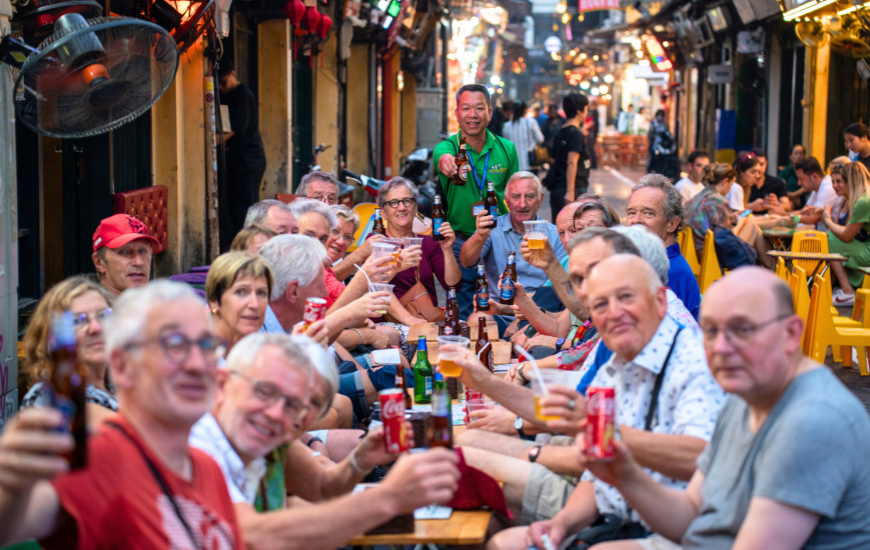
Enjoying Hanoi's Street Food - Mr Linh's Adventures
A must-try of Vietnamese gastronomy, Phở comes in regional variations. In Hanoi, it is distinguished by a clear and fragrant broth, best enjoyed in a street stall. Trust your sense of smell and local patronage to find the best addresses.
Another must-try of street food, Bánh mì, the quintessential Vietnamese sandwich, consists of a crispy baguette garnished with pâté, cold cuts, pickled vegetables, coriander, and sauce. A simple and tasty delight, perfect for a gourmet break at any time of the day.
Chả cá Lã Vọng, a refined Hanoian specialty, is a pan-fried fish dish, marinated in turmeric and galangal, then served with rice vermicelli, aromatic herbs, peanuts, and shrimp paste. An explosion of flavors and textures in the mouth.
To conclude this (very) quick tour of Hanoi's flavors, how about tasting the famous Vietnamese coffee? "Cà phê" is a bit like a sacred ritual. It is found everywhere, from small street stalls to the most chic cafes. The enchanting aroma that emanates from it is a true invitation to taste. Traditionally prepared in a phin, this strong and full-bodied coffee is often accompanied by a cloud of condensed milk. For the more gourmand, there is even an egg version, a true creamy delight. In short, Vietnamese coffee is much more than just a simple drink, it is an experience in itself!
Hanoi, once night falls, reveals a totally different face. The main streets, bathed in a soft light, come alive with a vibrant nightlife. Bia Corner, a true institution of the city, attracts partygoers in search of conviviality. Glasses of bia hoi, this fresh and inexpensive local beer, follow one another on the small plastic tables that occupy the sidewalks. The atmosphere is festive and relaxed, punctuated by conversations and bursts of laughter. On weekends, when the city center is closed to vehicles, the entertainment moves to the many bars that offer live concerts, creating an even more festive atmosphere.
 Directions
Directions
Hanoi is located in the north of Vietnam. Nội Bài International Airport (HAN) provides connections to many international and domestic destinations.
From the airport you can reach the city centre by taxi, bus or minibus. The price of a taxi ride varies between VND 300,000 and VND 400,000.
The best season to visit Hanoi is autumn (September to November) and spring (March to May), when the temperatures are mild and pleasant.
Hanoi is a fascinating destination that offers a unique and unforgettable experience. Whether you are looking for adventure, cultural discovery or authentic encounters, Hanoi will seduce you.